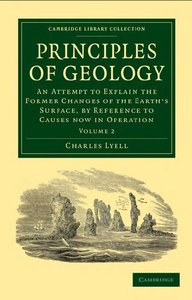"Sedimentary Basins Evolution, Facies, and Sediment Budget" by Gerhard Einsele
Sрringеr | 1992 | ISBN: 3540547436 0387547436 | 632 pages | PDF | 43 MB
This book provides an overview of all major topics in sedimentary
geology. It is unique in its quantitative approach to
denudation-accumulation systems and basin fillings, including dynamic
aspects. The relationship between tectonism and basin evolution as well
as the concepts of sequence cycle and event stratigraphy in various
depositional environments are extensively discussed.
Numerous, often composite figures, a well-structured text, brief
summaries in boxes, and several examples from all continents make the
book an invaluable source of information for students, researchers and
professors in academia as well as for professionals in the oil industry.
Contents
Part I Types of Sedimentary Basins
1 Basin Classification and Depositlonal Environments
1.l Introduction
1.2 Tectonic Basin Classification
1.3 Pre-, Syn-, and Post-Depositional Basins.
1.4 Basin Morphology and Depositional Environments
Part II Depositional Systems and Facies Models
2 Continental Sediments
2.1 Glacial Deposits of Lowlands and Shallow Seas
2.1.1 Continental Glacial Deposits
2.1.2 Glaciomarinc Sediments
2.2 Fluvial Sediments, Alluvial Fans, and Fan Deltas
2.2.1 Bed Forms, Sedimentary Structures, and Facies Elements
2.2.2 Alluvial Fans and Fan Deltas
2.2.3 Various River Systems and Their Sediments
2.2.4 Large-Scale Lateral and Vertical Evolution of Fluvial Systems
2.3 Eolian Sediments
2.3.1 Introduction
2.3.2 Eolian Sands
2.3.4 Clay Dunes
2.3.5 Eolian Dust, Loess
2.4 Volcaniclastic Sediments (Tephra Deposits)
2.4.1 General Aspects and Terms
2.4.2 Tephra Deposits on Land and Below the Sea
2.4.3 Volcaniclastic Sediments in Basins of Various Tectonic Settings
2.4.4 Alteration, Diagenesis, and Metamorphism of Volcaniclastic Rocks
2.5 Lake Sediments
2.5.1 Different Lake Systems and Their Sediments.
2.5.2 Recent and Ancient Examples of Lake Sediments
2.5.3 Specific Features of Lakes and Lake Sediments
3 Coastal and Shallow Sea Sediments (Including Carbonates)
3.1 Beach and Shoreface Sediments
3.1.1 Coastal Processes, Beach and Shoreface Sands
3.1.2 Storms and Storm Deposits (Tempestites)
3.2 Sediments of Tidal Flats and Barrier-Island Complexes
3.2.1 Tidal-Influcnccd Environments and Sediments
3.2.2 Sediments of Barrier-Island Complexes
2.4.1 General Aspects and Terms
2.4.2 Tephra Deposits on Land and Below the Sea
2.4.3 Volcaniclastic Sediments in Basins of Various Tectonic Settings
2.4.4 Alteration, Diagenesis, and Metamorphism of Volcaniclastic Rocks
2.5 Lake Sediments
2.5.1 Different Lake Systems and Their Sediments
2.5.2 Recent and Ancient Examples of Lake Sediments
2.5.3 Specific Features of Lakes and Lake Sediments
3 Coastal and Shallow Sea Sediments (Including Carbonates)
3.1 Beach and Shoreface Sediments
3.1.1 Coastal Processes, Beach and Shoreface Sands
3.1.2 Storms and Storm Deposits (Tempestites)
3.2 Sediments of Tidal Flats and Barrier-Island Complexes
3.2.1 Tidal-Influcnccd Environments and Sediments
3.2.2 Sediments of Barrier-Island Complexes
6 Special Depositional Environments and Sediments
6.1 Green Marine Clays
6.2 Oolitic Ironstones
6.3 Red Beds
6.4 Marine Evaporites
6.4.1 Models for Evaporite Deposition
6.4.2 Sequences. Sedimentary Structures, and Sedimentation Kates
6.4.3 Diagenesis and Geochemical Characteristics of Evaporites
6.4.4 Salt Structures
6.5 Nonactualistic (Precambrian) Depositional Environments
6.5.1 The Evolution of the Atmosphere, Hydrosphere, and Climate
6.5.2 Precambrian Sediments
7 Depositional Rhythms and Cyclic Sequeaces
7.1 General Aspects.
7.2 Special Features and Examples of Rhythmic Bedding.
7.3 Depositional Cycles in Lakes. Fluvial and Deltaic Systems
7.3.1 Cyclic Sequences in Lakes
7.3.2 Sediment Successions in Fluvial and Deltaic Systems
7.4 Sea Level Changes and Sequence Stratigraphy
7.4.1 General Principles and Terms
7.4.2 Changes in Sea Level and Storm Wave Base in Shallow Basins
6 Special Depositional Environments and Sediments
6.1 Green Marine Clays
6.2 Oolitic Ironstones
6.3 Red Beds
6.4 Marine Evaporites
6.4.1 Models for Evaporite Deposition
6.4.2 Sequences. Sedimentary Structures, and Sedimentation Kates
6.4.3 Diagenesis and Geochemical Characteristics of Evaporites
6.4.4 Salt Structures
6.5 Nonactualistic (Precambrian) Depositional Environments
6.5.1 The Evolution of the Atmosphere, Hydrosphere, and Climate
6.5.2 Precambrian Sediments
7 Depositional Rhythms and Cyclic Sequeaces
7.1 General Aspects.
7.2 Special Features and Examples of Rhythmic Bedding.
7.3 Depositional Cycles in Lakes. Fluvial and Deltaic Systems
7.3.1 Cyclic Sequences in Lakes
7.3.2 Sediment Successions in Fluvial and Deltaic Systems
7.4 Sea Level Changes and Sequence Stratigraphy
7.4.1 General Principles and Terms
7.4.2 Changes in Sea Level and Storm Wave Base in Shallow Basins
10 Sedimentation Rates and Organic Matter in Various Depositional Environments
10.1 General Aspects
10.2 Average Sedimentation Rates
10.3 Production and Preservation of Organic Matter
10.3.1 General Aspects.
10.3.2 Organic Matter in the Oceans
10.3.3 Organic Matter Preservation and Black Shales
11 The Interplay Between Sediment Supply, Subsidence, and Basin Fill
11.1 Introduction
11.2 Simple Relationships Between Source Area on Land and Basin Fill
11.3 Different Modes of Basin Filling
11.4 Vertical and Lateral Facies Associations (Overview)
Part IV Basin Evolution
12 Basin Evolution and Sediments
12.1 Rift Basins
12.1.1 Rift Structures
12.1.2 Examples of Young Rift Zones
12.1.3 Sediments of Rift Basins
12.1.4 Transition from Rift Basins to Coniinental Margin Basins.
12.2 Coniinental Margin and Slope Basins
12.2.1 General Aspects
12.2.2 Sediment Successions of Continental Margin Basins
12.2.3 Sediment Successions on Continental Slopes
12.3 Intracratonic Basins Associated with Mega-Rifting
12.3.1 Permian to Mesozoic Basin Development in Europe (Overview)
12.3.2 Mesozoic Sediments Between the North Sea and the Western Tethys
12.4 Continental or Intracratonic Sag Basins
12.5 Deep-see Trenches, Forearc and Backarc Basins
12.5.1 General Features
12.5.2 Deep-Sea Trenches
12.5.3 Forearc Basins
12.5.4 Backarc Basins
12.5.5 Preservation and Recognition of Ancient Subduction-Related Basins.
12.6 Remnant and Foreland Basins
12.6.1 Remnant Basins with Flysch
12.6.2 Foreland Basins with Molasse
12.7 Pannonian-Type Basins
12.8 Pull-Apart Basins
12.9 Basin-Type Transitions (Polyhistory Basins)
Part V Diagenesis and Fluid Flow
13 Mechanical and Chemical Diagenesis
13.1 General Aspects of Mechanical and Chemical Diagenesis
13.2 Compaction, Compaction Flow, and Other Flow Mechanisms
13.3 Principles of Chemical Diagenesis
13.4 Thermal History of Sedimentary Basins and the Onset of Metamorphism.
13.5 Special Methods and Processes in Diagenesis
14 Hydrocarbons and Coal
14.1 Source Rocks, Kerogen Types, and Hydrocarbon Potential
14.2 Generation of Hydrocarbons
14.3 Examples of Hydrocarbon Habitats
14.4 Evolution of Coal
References
Subject Index
































